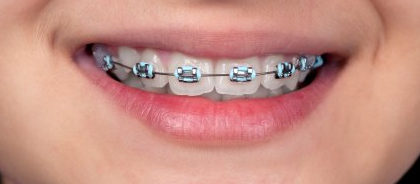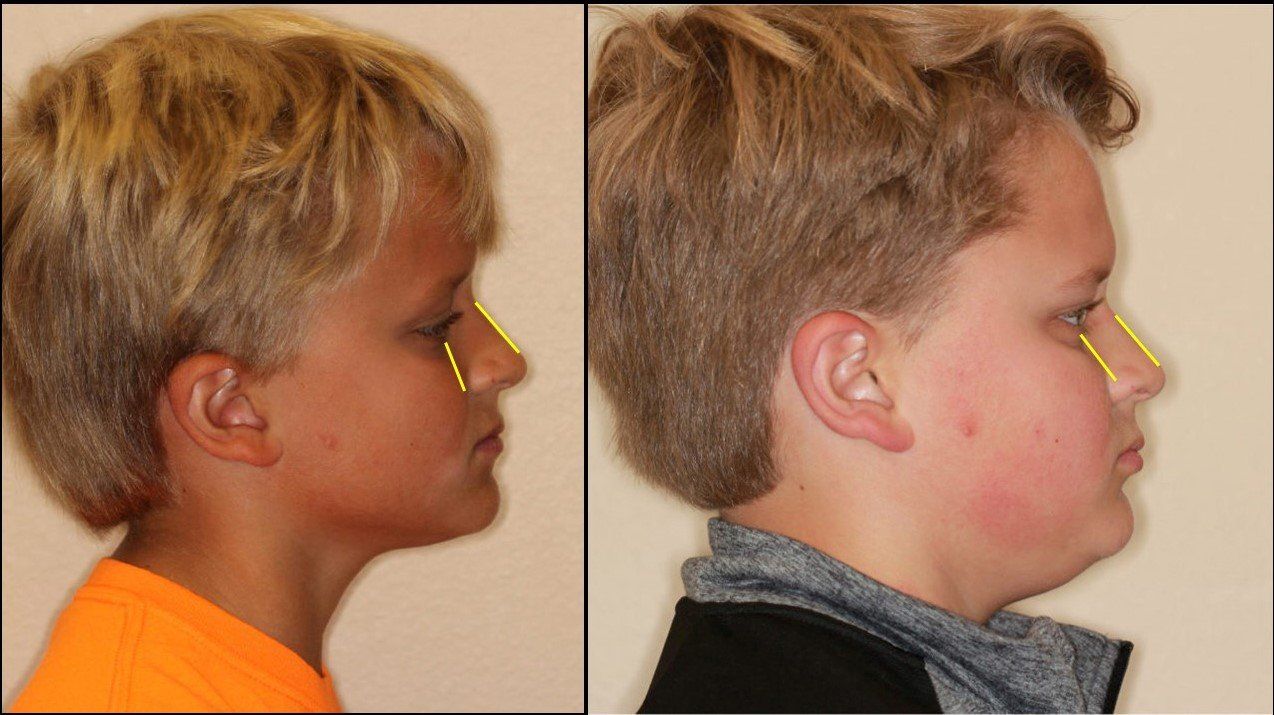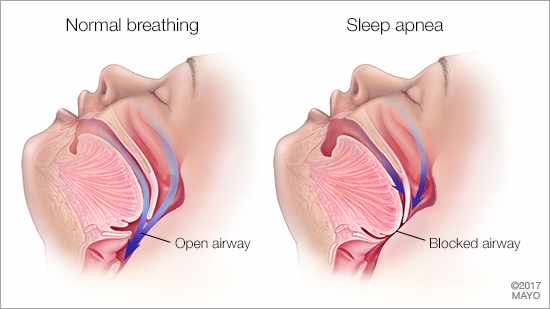Early Orthodontic Intervention
Early Orthodontic Intervention

A large portion of what we do here at Symmetry is focused on guiding the growing face in the right direction. An overwhelming number of children in today’s population develop habits or other limitations that can disturb normal programmed growth. This is why some children develop severe crowding once their permanent teeth are in. At Symmetry we not only focus on recognizing these disturbances and educating the patient but also guiding the growth of those who have gotten off track due to these issues. If the growth can get back on track during the prime developing years (6-9) sometimes the need for braces can be avoided all together. If your children have fallen behind and are out of the prime facial development years, no worries, the growth can still be caught up and a proper face and smile is still very achievable. Some common habits or issues that can cause aberrant or irregular growth in your child’s jaws include: thumb sucking, tongue thrusting, mouth breathing, irregular swallowing, grinding, and many others. Set up a consult today if you have noticed any of the above from your child at home.

REQUEST APPOINTMENT





By Stephen Deal
•
19 Dec, 2018
Sleep Tight Sleep is another hot topic in modern medicine and is now making its way to the dental profession, with good reason. Poor sleep is evident everywhere in society today. Whether its tossing and turning at night, feeling tired all day long, early morning headaches and facial muscle soreness, wetting the bed (for children), or just plain ole dry mouth in the morning, it all stems from something that we focus on in this blog series: a compromised airway. As stated in previous posts, obtaining oxygen is priority number one for the human body and anything that gets in the way of this priority will be changed or altered. Many of these changes that occur can be noticed in the mouth and face. This blog will go over some of the signs and symptoms of poor sleep and then will discuss ways to cope with the issues (band-aid) as well as ways to fix the issues. Before getting to the symptoms it is important to understand what is going on during sleep. To grossly simplify it, there are cycles that the body goes through during sleep, some of which are more important in terms of valuable sleep than others. In order to get to the important cycles, the body must be truly relaxed and can’t have any interruptions, namely in oxygen intake. For most people who breathe through their noses and have plenty of oxygen, getting to these cycles is not typically an issue. However, for people who have smaller airways due to any number of reasons (underdeveloped jaws, large neck diameter, obesity, large tongues, mouth breathing, etc.) getting to this relaxed deep sleep state can be very difficult. These people can “sleep” the whole night but only spend a few minutes in the important cycles. If it is difficult to intake the oxygen, often times there will be signs like snoring or grinding the teeth. This is simply the body attempting to change the things that are in its way of getting oxygen as referenced earlier. For example, in a situation where there is excessive grinding at night, the body is telling the lower jaw (and tongue with it) to go forward out of the way of the airway so that more oxygen can flow to the lungs uninhibited. However, the lower jaw is typically trapped backwards by the upper teeth (retruded maxilla, see first blog post for more info), so when it tries to come forward you get grinding and wearing of the lower teeth against the uppers. Sometimes this happens at such a high degree that patients will completely wear their teeth down to flat planes. Another example of a sign of poor sleep is snoring. This is the sound the loose soft tissue in the airway is making as oxygen is trying to move past it. For a mental image, try picturing your lungs as a balloon filling with air, and then deflating through the small airway with flabby neck tissue surrounding it. In the balloon analogy the flappy noise you hear when letting the air out of a balloon really fast represents the noise you hear from someone snoring. If there were a larger exit diameter for the air in the balloon and the air in your lungs, there would be no flappy snore sound. You can imagine that with just these two issues, getting the oxygen can be a big chore for the body on autopilot. Thus, during the struggle, the brain sends a “wake up” signal and the person will toss and turn and wake up slightly to try to restart the whole process. Worn teeth or grinding at night is a good indication that you may have a compromised airway and your body is struggling to breath while on autopilot. The muscle soreness and headache symptoms people with poor sleep often have, stem from the same issues. The muscles in your face are trying to help the lower jaw and other tissues move out of the airway’s way to make it easier on the person, but when these muscles spend every night doing this same thing over and over they eventually will fatigue and the patient will wake up in the morning with soreness in the temples and face or even headaches. Ever notice someone in your family that can fall asleep at the drop of a hat? Or as soon as dad or grandpa hit the recliner they are out like a light? These people are obviously not obtaining the proper kind of sleep at night and are very tired after going through their normal everyday activities to the point where any sign of relaxation tells the body, “let’s try and get some valuable rest”. All of these signs and many more can tell the dentists and even the patient that something is going on to prevent them from sleeping well. While dentists have long since recognized these factors, most of the time the only treatment or advice they provide is to visit an ENT or sleep specialist and have a sleep study done. This is excellent and even lifesaving advice, as studies have shown sleep apnea can shorten one’s life by 10-15 years. A sleep study is so useful for determining exactly what kind of sleep and the amount of time of useful sleep you are getting. A short example comes from my small-town practice where a patient of mine presented with extremely worn-down teeth and inflamed jaw muscles. The patient didn’t remember ever grinding or clenching their teeth during the day, but they were starting to have serious concerns with their morning headaches and overall fatigue. After several questions and a history, I explained some of the things talked about in this blog and recommended the first thing they do was have a sleep study. A few months pass, they got the sleep study done and came back to me for their 6-month cleaning. The patient said that 4 hours through their sleep study the doctor woke them up and told them that this was one of the worst cases of sleep apnea (apnea=lack of oxygen) they had ever seen. They told the patient that they were averaging 10 minutes of valuable sleep a night!!! Imagine trying to go to work every day with only ten minutes of good rest. The doctor prescribed the patient a CPAP machine to wear at night to provide a positive pressure of oxygen down their airway. The patient had been wearing the CPAP for about a month when they came back to the office and stated that they had never felt better in their lives. They could sleep just two hours and feel completely refreshed and ready to go. Incredible!! So, for dentists, recognizing the signs and symptoms of sleep disordered breathing and recommending a visit to the patients’ doctor for a sleep study can help the patient immensely, but it is not the only help you can give. As talked about earlier, most of the time the underlying problem during poor sleep are things getting in the way of a small airway (most of the time the tongue and lower jaw). The lower jaw is typically trapped there by the upper teeth, and although the body is trying to release the trap on its own by grinding the teeth down to flat planes, it often will cause serious damage first. Wearing a CPAP machine will help get the patient to sleep better by pushing oxygen through the smaller airway, but it won’t completely resolve the underlying issue. There are some treatment options that a dentist can give to help with the jaw position issues and increase airway volume. Simple treatment options that don’t permanently fix the underlying problems but allow the patient to sleep better (band-aid) consist of a sleep appliance. These removable appliances are worn at night and generally hold the lower jaw in a more forward position. Studies show these devices can increase the airway by 30%. This can make it easier for oxygen to flow while laying down. Like the CPAP, this does not fix the underlying problem, but does significantly increase valuable sleep time and allow the patient to feel more rested. To ultimately address and repair the reasons for poor sleep, a more dedicated treatment is necessary. Developing or remodeling the upper jaw and releasing the trap on the lower jaw and tongue will allow more space for the oxygen to flow freely during sleep, and at all times for that matter. With a properly developed upper jaw, the tongue is allowed the space to posture forward in the mouth during sleep, so the body doesn’t need to damage your teeth and muscles to open the airway to breathe. It will prevent people from having to sleep with their mouths open to get enough oxygen. This development and remodeling of the jaws are accomplished through growth guidance and ControlledArch orthodontics at our clinic. Details about this treatment can be given at any time but the gist of it is that an appliance is fixed on the upper teeth that slowly signals the body to remodel and develop the upper jaw. With a more developed upper jaw, the lower jaw now has additional room to remodel in a more airway-friendly forward position. After the jaws have both remodeled forward the whole process is finished with braces to bring the teeth together and hold the jaws in this position. The essence of this treatment is removing the epigenetics (environmental influence) and allowing the body to remodel the jaws in a more favorable position to make obtaining oxygen easier without disrupting facial symmetry. To end, it is important to note that there can be many issues that can prevent people from getting solid sleep, but most of them all relate back to trouble in the airway. If you feel like you are having trouble sleeping at night a good place to start is by getting a sleep study. There are dentists out there now, myself included, who make a lot of sleep appliances and sometimes that is all the patient will need to relieve the symptoms of poor sleep and obtain adequate rest. However, in light of recent research and development of specialized appliances, we as dentists are now able to find a more definitive solution to the underlying issues. As stated in the last blog, a good plan and great treatment all stems from proper diagnosis and taking into account every issue that could play a part.

By Stephen Deal
•
12 Dec, 2018
Foreword: The idea is for this to be the first in a series of blogs by Dr. Deal to educate followers or anyone who will listen on topics in Oral Medicine. Some blogs may be continuations of previous ones, or some may be just stand alone one-piece topics, either way the goal is to get people to start thinking about dentistry as more than just teeth and start realizing that the head and neck is a crucial part to our overall health. A good place to start for this blog is a hot topic on everyone’s brains these days, crooked or malpositioned teeth. Seems like everyone in the world is interested in orthodontics and straightening their teeth in the quickest way possible. Since it is such an important and relatable topic this post will have several follow up and continuation blogs, but for this one in particular we will focus on how and why teeth get crooked or unpleasant looking to begin with. With the exclusion of a few fore fathers of growth guidance, the orthodontics industry has been one in which the only goal throughout treatment is to end up with straight teeth. Typically, there is little regard for how the teeth got in the crooked positions they are in. The only barometer for success is if the teeth are aligned and straight in the end. This style of treatment would be analogous to finding a leak in your ceiling and replacing the sheetrock of the ceiling only without considering the source of the leak in the roof. In other words, the problem looks to be fixed and everything is pretty again, but the next time it rains, here comes the leak. In traditional orthodontics, the teeth appear beautiful and straight when treatment is done, but down the road, when the original undiagnosed problems are not fully addressed, the teeth tend to devolve back to their original positions, albeit not as crooked as they were before but not as beautiful as they should be. Why is this? Well I’m here to tell you that they don’t just randomly come into these crooked positions, instead it is a combination of evolution and epigenetics (environmental influence) that causes these malocclusions or crooked teeth. The crooked and malpositioned teeth we see today have NOT been a problem since the beginning of time. When we go back and study the jaws and teeth of people in prehistoric eras, it becomes obvious the differences between theirs and modern day humans'. To name just a few key differences, their jaws were more robust and developed in a more forward (Anterior) manner, meaning there was more room for all the teeth to fit in the arches (even wisdom teeth!!!), and their teeth were worn down and flatter than modern man. These changes and many others can all be attributed to changes in lifestyles from their societies to ours. Modern humans have a much softer and more sugar-filled diet than our ancestors, which not only gives us cavities (a “relatively” new problem) but also lead to us having smaller, more underdeveloped jaws due to less muscle pull on the bones you get from chewing harder foods. Another difference is the changes in our nursing of newborns. In ancient eras they breast fed their children for much longer than we do today in modern society. We are the only mammals in the animal kingdom that wean our offspring before the first baby molar erupts into the mouth. Breast feeding (stay tuned for more info in later posts) plays a crucial role in developing the infants upper and lower jaw and preparing the child for proper nasal breathing and swallowing. Now you may be asking "why do I care about boring prehistoric skulls?" or "how does modern man’s small jaws relate to my crooked teeth?". Well I mentioned these changes in skull and jaw structure because it answers the “how” part of the question from the beginning. Nothing much has changed regarding the size of our teeth over the centuries. They are just prone to coming in crooked due to these evolutions in skull structure. That doesn’t mean that everyone’s teeth will be crooked, but the physically smaller jaw size does explain how so many people have developed crooked teeth

By Stephen Deal
•
12 Dec, 2018
As parents, we want what is best for our children in every way. Many parents are well aware of the specific milestones that our children should reach during the first eighteen months of life, however; there are several important growth and development factors that must be evaluated in each child during the first decade of life. Surprisingly, it is your child’s dentist who becomes the guardian of normal facial growth and development. The role of your dentist is more than just taking care of your child’s teeth. It is their goal to monitor and guide the growth and development of young children to achieve the following: 1. A Pleasing Face which equals Optimal Esthetics 2. A Beautiful “Full Smile” 3. A Normal and Functional Bite 4. No TMJ Problems 5. No Sleep Disordered Breathing 6. A Lifetime of Oral Health Many parents are unaware that 60% of their child’s facial development is completed by the age of 8 and that 90% of facial development is completed by the age of 12. This means that the earlier your child sees a dentist, the better the opportunity to detect and correct any growth and development problems that may be present. Facial growth is the sum of the individual growth of each bone which comprises the face. There are several influences which can cause an unequal growth of a child’s face and this imbalance may affect a child’s health and appearance. A normal balanced face is the result of more than just bone growth; it is the balance of normally functioning muscles, proper nutrition and the ability to breathe normally. Scientific literature and studies have shown that when these delicate balances are altered, changes in health and appearance occur. One of the most common abnormalities in a child’s facial growth and development is caused by a compromised airway or quite simply stated - The inability to breathe properly through the nose. Children who cannot breathe well through their nose will tend to breathe through their mouth. This sets up a chain of events which may severely impact not only the health of a child, but also the way a child’s facial features develop, and ultimately the way a child looks as an adult. The most common causes of altered breathing are: Enlarged Adenoids Enlarged Tonsils Deviated Septum (Nasal obstruction) Allergies Chronic Sinus Infections The effects of a compromised airway on the growth of a child are revealed in many ways. The tongue often positions itself snugly in the lower jaw to allow a child to breathe more readily through the mouth. This in turn changes the growth of the lower jaw so that it grows more vertically. This change in growth direction makes the child’s face grow longer. At the same time since nasal breathing is severely compromised, the upper jaw and midface (the nasal bones, cheek bones, and bones supporting the tissue of the face) fail to develop at a normal rate because the natural growth stimulant of air flow through the nose is absent. This results in a deficiency of growth of the upper jaw and midface, which added to the long facial growth from the lower jaw, directly impacts the facial balance and beauty of a child and later as an adult. As parents we often see the signs of airway problems, however; they often go unnoticed. Here are a few common symptoms of airway problems: Mouth Breathing – Lips apart Chapped Lips and Soft Tissue Gingivitis Venous Pooling Beneath the Eyes – Dark circles beneath the eyes Change in Head Posture – Posturing the head forward and/or tipping the forehead backwards Tonsil and Adenoid Problems – Chronic sinus problems, throat problems Snoring – Children do not usually snore Loud grinding of teeth during sleep Bed wetting Reflux in the Eustachian Tube – Leads to inner ear infections Enlarged adenoids and tonsils are one of the most common causes of airway compromise. Adenoids are tonsil-like glands located at the back of the nose. The most current literature indicates that tonsils and adenoids serve to bolster the immune system during the first two years of life. After that, there seems to be no obvious function and a child can live normally without them. Children are born with adenoids which are quite small. As a child grows, so do the adenoids, reaching their maximum size when the child is 10 to 12 years old. From that point on, normal adenoid tissue starts to shrink on its own. It's during the growth phase that adenoids can cause problems. Enlarged, or "hypertrophied" adenoids, can block a child's nasal passages and result in nasal congestion, mouth breathing and increased snoring. In severe cases, where the adenoids block the nasal passage completely, they can cause sleep disturbances such as sleep apnea where breathing is stopped altogether. A child may be tired all the time as a result of interrupted sleep related to the nasal blockage which typically worsens at night. The ideal treatment for chronically enlarged, obstructing adenoids and tonsils is to surgically remove them. However in many cases if a child develops a nasal breathing habit, the tonsils and adenoids shrink substantially often negating the need for surgery. We also know that chronic nasal blockage can contribute to increased rates of ear infections and persistence of fluid in the middle ear area. For the child with recurrent ear infections, removal of enlarged and obstructing adenoids may help reduce the number of ear infections. Of course enlarged adenoids are not the only cause of persistent nasal congestion in children. Aside from the history of symptoms, the best way to assess the size and condition of the airway is for the dentist to take a Cone Beam CT Scan of the head and neck region. These in-office scans take 90 seconds and are painless to the patient. The information gleaned from this technology is very important. The information includes: The accurate volume and dimension of the patient’s airway If changes in growth of the facial bones have occurred and to what degree. If congestion of the various sinuses is present What stage of growth and development the child is undergoing and to what degree can the growth changes be corrected by intervention. Head posture and alignment of the upper spine The child’s dentist working closely with an ENT (Ear, Nose and Throat Specialist) can help to assess and eliminate the causative factors of facial growth abnormalities. When corrected early in a child’s life, the facial growth is encouraged to return to harmonious growth and development. In those cases where facial growth changes are significant and facial harmony is disrupted, the dentist may intervene and guide the child’s growth back to normal. Using various oral appliances, the dentist can actually modify the abnormal growth pattern and restore the balance of growth that nature intended. The patient in the picture below, was treated with a Fixed Guided Growth Appliance for 4 months and then braces. You can see the correction of the facial asymmetry is profound and also the appliance created adequate space for all the teeth.

By Stephen Deal
•
12 Dec, 2018
I have seen a lot of talk here lately about early orthodontic treatment, but not much talk about proper growth of the face, which in my opinion is THE most important thing to think and talk about when it comes to early orthodontic treatment for children. Catching improper growth and development of the face/jaws early allows for easy correction because the child still has lots of growth potential remaining. Simply straightening the teeth at an early age is not sufficient and can create problems such as an underbite and poor lip support. These problems arise when you simply rush to close spaces or straighten teeth and fail to see the big picture which is straight teeth AND a beautiful face. Here is my son, Thompson, before treatment and then after growth guidance therapy:
symmetrylr.com ©2019 | A DealFamilyDental.com
Company


